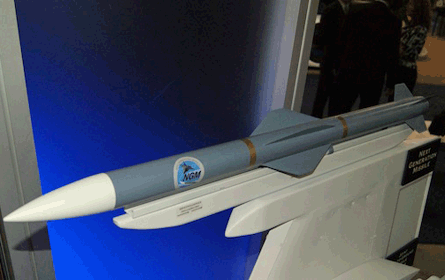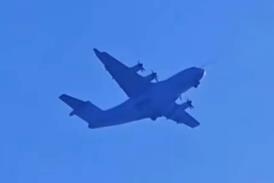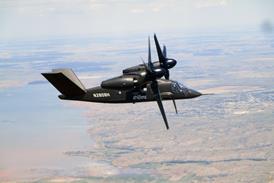A Lockheed Martin/Northrop Grumman team has revealed plans to compete for a contract to replace two Raytheon missiles - the AIM-120 AMRAAM and AGM-88 HARM - despite being shut out of a series of technology development contract awards.
A notional concept for the US Air Force's next generation missile (NGM) was displayed in Lockheed's exhibit at the Air Force Association's annual convention in Washington DC.
The missile showed a standard AMRAAM, with four control fins mounted on the mid-body and the tail of the missile. It was not clear how the notional concept compares to the Lockheed/Northrop team's internal designs.
The USAF is planning to release a request for proposals to industry in late 2012, said Chuck Morant, Lockheed's manager of strike weapons business development.
 |
|---|
© Stephen Trimble/Flightglobal |
Lockheed also confirmed that its partnership with Northrop remains active, and that the US firms have invested internal research and development funding in the NGM concept.
US aerospace and defence firm Alliant Techsystems (ATK) has dropped out of the Lockheed/Northrop team that was originally announced in July 2008, Morant added.
The NGM, previously known as the joint dual-role air dominance missile, is being designed to equip the Lockheed F-22 and F-35 with a long-range missile that can strike other aircraft or surface-to-air missile systems.
The missile must also be small enough to be stored inside an internal weapons bay.
Boeing and Raytheon each received competitive awards last year from the US Defense Advanced Research Projects Agency to complete an advanced missile demonstration under the triple target terminator (T3) programme.
The T3 programme was launched after Boeing was awarded a series of technology development awards by the Air Force Research Laboratory, to work on a new directional warhead and a new kind of seeker with an integrated fuse.
Each of the technologies is expected to feed into the advanced NGM programme.
The USAF plans to launch the competitive prototype demonstration programme next year, according to acquisition documents.
Source: Flight International























